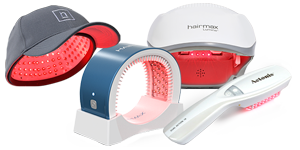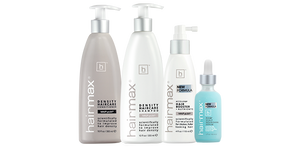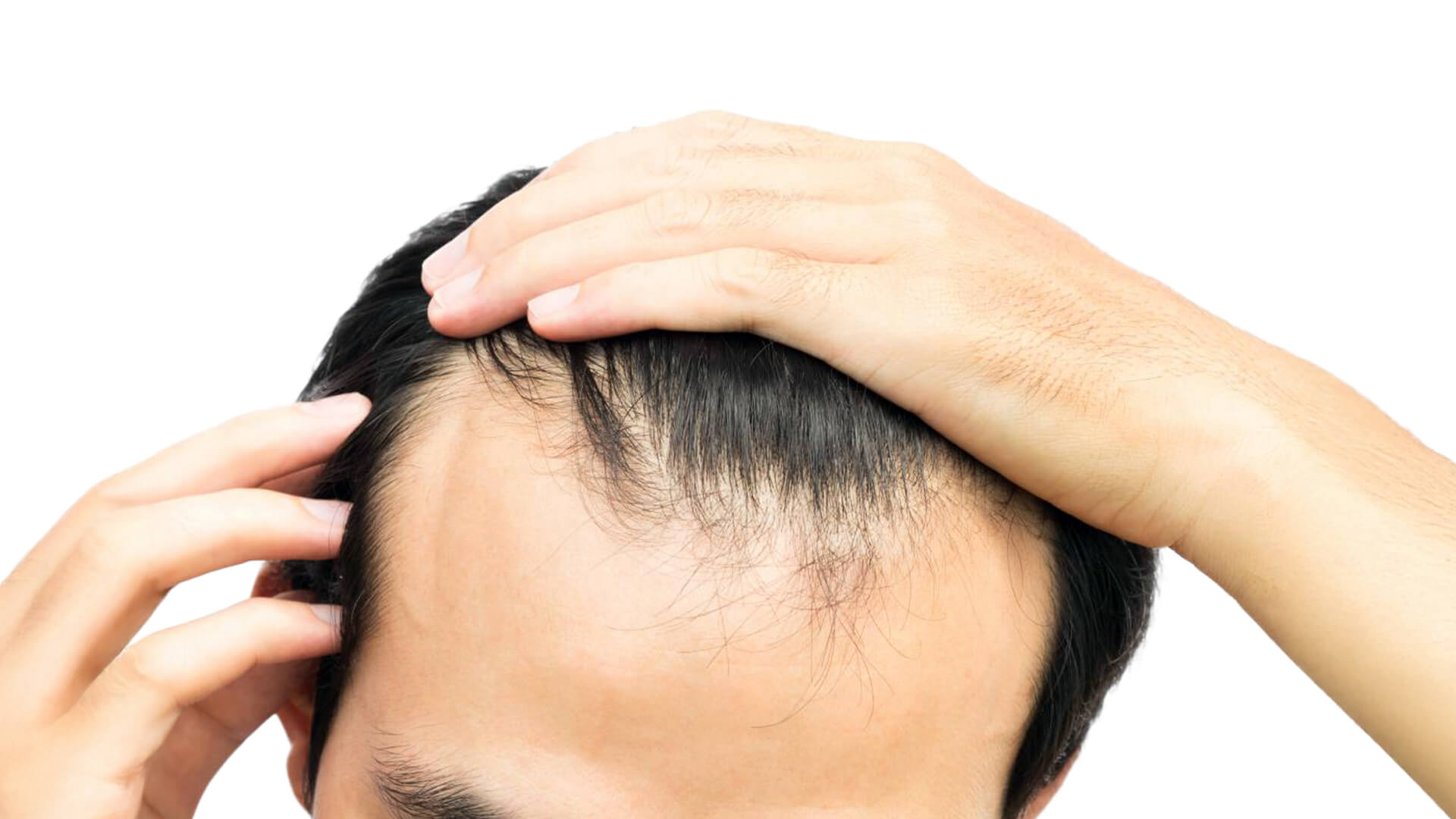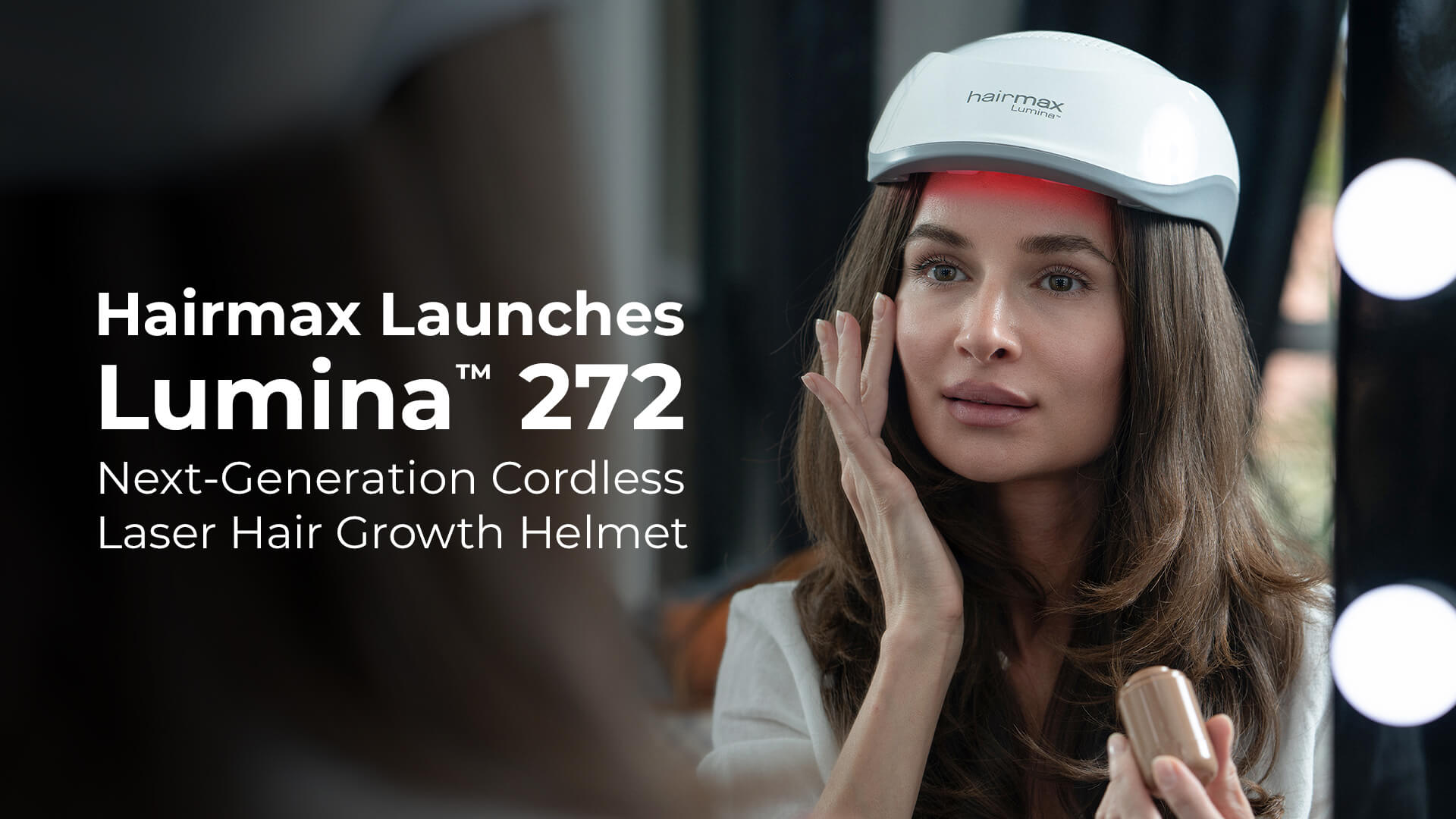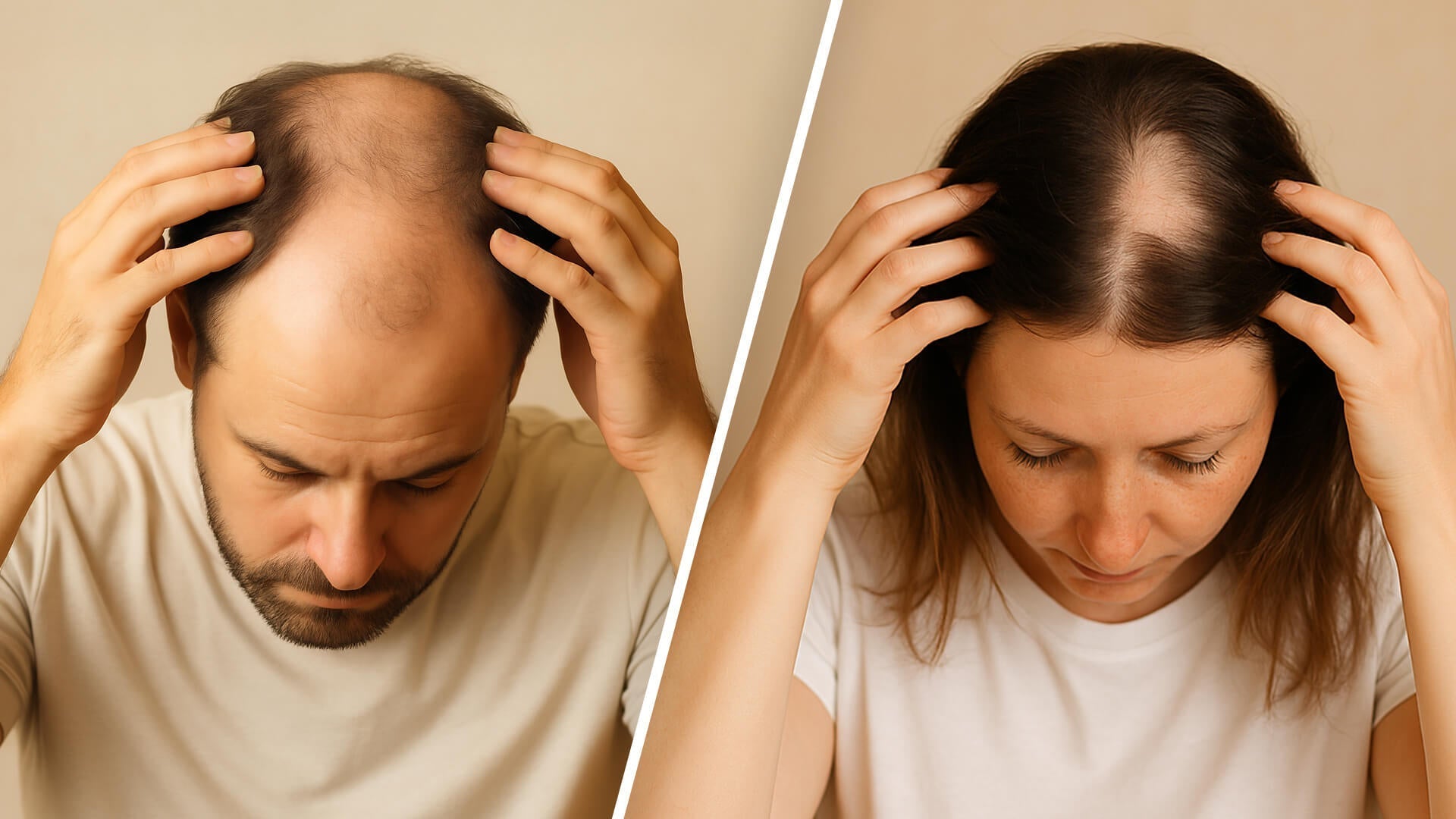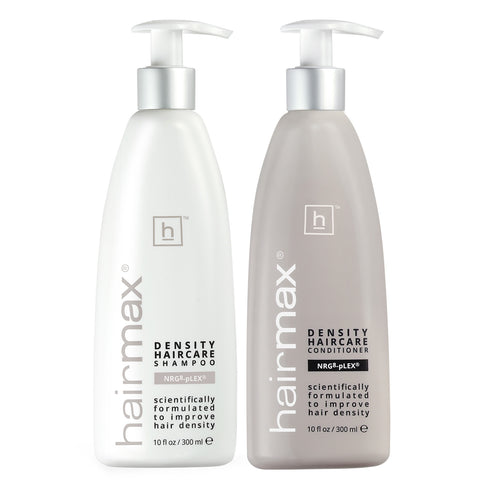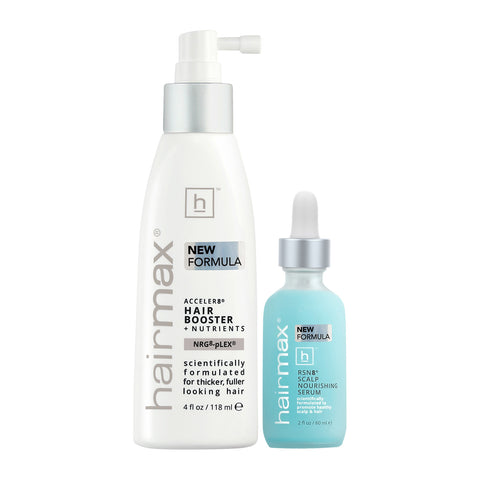Introduction
You’ve looked in the mirror after your morning shower and noticed something has changed. Your hairline is not quite where it used to be. Maybe there’s less hair at the front, or it looks thinner around the edges. It can be a little shocking, and your first thought could be how to fix a receding hairline. Noticing your hairline starting to thin can be tough on your self-esteem. Many people feel embarrassed or less confident when their hair starts to change. You are not alone.
A receding hairline is surprisingly common and can happen to both men and women. Sometimes it starts slowly. At other times, it feels like your hairline has receded overnight. But here’s the good news: thinning hair is not the end of the world. Keep reading for simple, proven solutions you can try. From laser devices and shampoos, to supplements, you have several options available that can make a significant difference in how your hair looks and feels.
What is a receding hairline?
A receding hairline is a condition where your hair slowly moves back from your forehead. Hair often starts receding close to the temples, creating an “M” shape over time. For some people, the hairline slowly but consistently moves back, while for others it may stop after a while.
There are different types of hair thinning. With general thinning, the hair on your entire head may become finer or fall evenly. However, with a receding hairline, the hair loss mostly affects the front of your scalp. You may still have thick hair on the top or sides of your head, but your forehead starts looking larger.
The following are early signs of a receding hairline:
- Hair near your temples looks thinner than before
- Your forehead looks higher than it used to be
- Your hairline looks uneven or changes shape slowly
- You notice significantly more hair loss in the shower or when combing your hair
Noticing these signs early is essential because the sooner you take action, the better your chances are of slowing down the hair thinning.
Common myths and facts
Myth 1: Only men get receding hairlines
Fact: Women can get them to. It looks a little different and happens more slowly.
Myth 2: Wearing hats causes hair loss
Fact: Hats do not cause receding hairlines. Hair often falls out because of what is happening inside the body.
Myth: Washing your hair too often causes receding hairlines
Fact: It is normal to lose some hair when washing. However, this hair loss is part of your natural shedding cycle. The hair was already falling out naturally.
Myth: A Receding hairline is always permanent
Fact: Not always. Many people see good results with the right treatment.
What causes a receding hairline?
When people start noticing their hairline receding, they often wonder what causes it. The truth is a receding hairline may be out of your control, but there may be ways to improve it. Still, understanding the reasons can help you know what to do next. The main causes of a receding hairline are:
-
Genetics and hereditary
If your parents or grandparents had thinning hair, there’s a good chance you might have it too. This is a genetic receding hairline. It is the most common cause of a receding hairline. For men, it often starts at the temples. For women, the hairline may thin more evenly. You cannot change your genes, but you can help treat a receding hairline caused by genetics if you notice the symptoms early.
-
Hormonal changes
Hormones play a big role in hair growth. A hormone called DHT (dihydrotestosterone) is known to shrink hair follicles. This causes hair to grow back thinner and shorter until it stops growing. DHT levels are often higher in people with thinning hair. Hormonal changes associated with childbirth, menopause, or certain medical conditions can also impact hair growth.
-
Aging
As we get older, our hair naturally changes. It may grow slower, become finer, or fall out more easily. A receding hairline can be a part of some people's natural aging process. It does not mean you are unhealthy. It just means your body is aging naturally.
-
Stress and lifestyle
Long periods of stress can affect your entire body, including your hair. When your body is under pressure, it may push more hair into a ‘resting’ phase. After a few months, that hair starts to fall out. Lack of sleep, smoking, and a poor diet can also lead to weaker hair over time.
-
Poor haircare practices
How you treat your hair matters. Tight hairstyles, such as braids, ponytails, or buns, can pull on the hairline and cause it to thin over time. This is also called traction alopecia. Using harsh chemicals, too much heat, or rough brushing can also damage your hair and scalp. Protect your hair by treating it gently.
-
Medical conditions and nutritional deficiencies
Certain health issues, such as thyroid problems or autoimmune diseases, can cause hair loss. A lack of vitamins and minerals, including iron, zinc, or vitamin D, can also weaken your hair. If your hairline is changing quickly or you feel unwell, it may be a good idea to consult your doctor.
Hair loss is very personal. However, once you know what might be causing your receding hairline, you can start looking for ways to fix it.
Tips to Help with a Receding Hairline
The good news is that in some cases, you can treat a receding hairline without surgery or painful procedures. You do not always need something extreme to see results. There are many simple and safe ways to slow down hair loss and even grow hair back over time. Some of the proven ways of fixing a receding hairline include:
-
Laser hair growth devices
-
Over-the-counter treatments and serums may help
-
Hair supplements
-
Lifestyle and nutrition
Let’s discuss each of these options in detail.
Laser hair growth devices

Laser hair growth devices are a gentle and non-invasive way to help your hair grow. Devices like our Hairmax laser hair caps and combs use low-level laser therapy, also known as LLLT.
What is LLLT, and how does it work?
LLLT stands for low-level laser therapy. It uses safe, low-powered lasers that are moved over your scalp to energize hair follicles. This light helps increase blood flow, bringing in more oxygen and nutrients that reach the roots of your hair. Over time, this can help weak or inactive hair follicles regrow hair.
LLLT also helps reduce inflammation in the scalp, which is another reason some people lose hair. It supports a healthy environment for hair to grow.
Types of laser hair growth devices
There are different kinds of laser hair devices to choose from, including:
-
Laser caps: These resemble a regular cap or hat. You wear them for a few minutes, 3 times a week. They cover your whole scalp and are hands-free.
-
Laser bands: These are worn across the top of your head. They are lightweight and good for full scalp coverage including the front hairline and crown. .
-
Laser combs: These look more like brushes with built-in lasers. You slowly move them across your scalp. Some people like them because they can target specific areas, like your hairline.
Benefits of laser hair devices
Laser hair devices are beneficial because:
-
They are painless and safe. You will not feel anything sharp or hot. The treatment is gentle on the scalp.
-
Portable and easy to use. You can use these devices from the comfort of your home while watching television or reading a book.
-
No recovery time. These devices are non-invasive. After using them, you can go about your day as usual.
-
Supports other treatments. Laser therapy works well when combined with shampoos, serums, and supplements.
What to expect over time

Laser hair growth devices are not quick fixes. Like most hair loss treatments, they require consistency and take time. You need to use them regularly. Most devices are used 3 times a week, with each session lasting between 3 and 30 minutes, depending on the device. You must be patient and consistent to see results. Most people start noticing changes after 3 to 6 months. You may see less shedding, stronger strands, and new baby hairs.
Laser hair devices are suitable for people in the early to middle stages of hair loss. If you still have some hair in the thinning areas, laser therapy can help you retain it and possibly grow more. It may not work well if the follicles are completely gone.
Over-the-counter solutions

If you have noticed your hair receding but the effects are not yet severe, you can choose an over-the-counter solution. These are products you can buy at a store or online without a prescription. You don’t need to see a doctor to use these products. You can add these everyday items to your regular haircare routine.
Some of the best products for receding hairlines include special shampoos, conditioners, serums, and hair treatments. These products may help with hair loss and support healthy hair.
-
Hair growth shampoos and conditioners
These products clean your scalp and help your hair grow stronger. They often contain ingredients like:
-
Biotin: This is a vitamin that helps strengthen your hair and prevent breakage
-
Caffeine: This helps wake up your hair roots and support healthy growth.
-
Saw palmetto: This is a natural ingredient that blocks DHT, the hormone that causes hair loss.
These shampoos and conditioners work best when used regularly. They clean the scalp, remove buildup, and make the hair feel fuller. They also create a healthy base for new hair to grow.
However, don’t expect overnight results. It may take a few weeks or months of regular use before you notice a difference.
-
Serums and topical treatments
Hair growth serums and scalp treatments are another great option for receding hairlines. These are liquids or creams that you apply directly to the scalp. Some have clinically-backed ingredients that treat hair loss by helping blood and oxygen reach the hair follicles. This can wake up weak follicles and encourage them to regrow hair.
Some serums also include natural ingredients, such as peppermint oil, that help improve scalp health and boost blood flow.
For best results, apply serums to a clean, dry scalp. Use them as directed on the label. Just like with shampoos and conditioners, it takes time to see results, but many people notice less hair falling out and healthier new growth after regular use.
Supplements for receding hair
Another way to help with a receding hairline is by taking oral hair regrowth supplements. These are pills or capsules that you take by mouth daily. They give your body the nutrients it needs to support healthy hair growth from the inside out.
Many supplements have ingredients that help with thinning hair. As a bonus, these ingredients also help improve your skin and nails. They include:
-
Biotin: This is one of the most popular vitamins for hair. It helps make your hair stronger and thicker.
-
DHT blockers: These blockers help lower the hormone DHT, which can shrink hair follicles and cause hair to fall out. Blocking DHT may help slow down or stop a receding hairline.
-
Other nutrients: Good supplements also include other nutrients like Niacin, vitamin B6, Zinc, Selenium, Manganese, and Iron. These are all important for healthy hair growth.
Most supplements are taken once or twice a day. Be sure to follow the directions on the label for the best results. Supplements work slowly, so give them time and stay consistent.
Lifestyle and nutrition tips
When trying to address a receding hairline, the small daily actions you take can make a significant difference. Eating the right foods and taking care of your hair can help make the treatments work better.
-
Eat foods that feed your hair
Your hair needs the right nutrients to grow strong and healthy. If your body is missing some of these nutrients, your hair may grow slowly or fall out easily. A balanced diet that supports hair regrowth should include:
-
Iron: This nutrient helps carry oxygen to your hair roots. It is found in red meat, spinach, and beans.
-
Zinc: May help repair damaged hair and help grow new strands. Zinc is found in seeds, nuts, and whole grains.
-
Vitamin D: Helps wake up sleeping follicles. It is found in fish, eggs, and sunlight.
-
Protein: Your hair is made of protein, so ensure you eat enough. Protein is found in dairy, lentils, tofu, and meat.
-
Biotin: This is a B vitamin that supports healthy hair. It is found in almonds, eggs, and sweet potatoes.
If you cannot get all these nutrients from food, taking a supplement can help.
-
Treat your hair with care
How you treat your hair can worsen hair loss. Small changes in your daily routine can help protect the hair you still have.
-
Massage your scalp: Gently rub your scalp for a few minutes each day. This can help increase blood flow and support hair growth.
-
Avoid tight hairstyles: Styles like buns, ponytails, and braids can pull on the hairline, causing it to thin over time.
-
Reduce heat styling: Excess heat from flat irons, curling irons, and blow dryers can weaken your hair and increase hair loss. Let your hair air-dry as often as possible and use heat tools sparingly.
-
Use gentle hair products: Avoid hair products with strong chemicals. Choose shampoos and conditioners made for sensitive or thinning hair.
These small changes can reduce hair from falling out and create a healthy space for new hair to grow. When you combine these habits with other treatments, like supplements and shampoos, you give your hair the best chance to become stronger and fuller.
When to see a specialist
Sometimes, even after trying different treatments, nothing seems to work. If your hairline recedes quickly and the hair loss worsens, it might be time to visit a specialist.
You could be dealing with a different type of hair loss. Consult a dermatologist or trichologist to help you understand your hair and scalp problems. They can take a closer look, ask questions about your health, and figure out what might be going on. A specialist may also run blood tests, check for skin conditions, and look for signs of illness that may be causing your aggressive hair loss. They can also suggest treatments that are not available over the counter.
Comparison of receding hairline treatment options
|
Treatment Type |
Time to See Results |
Cost |
Ease of Use |
|
Laser Devices |
3-6 months |
$$$ |
Easy |
|
Topical Serums or Foams |
3–6 months |
$$ |
Easy |
|
Supplements |
4-6 months |
$$ |
Very Easy |
Conclusion
Dealing with a receding hairline can be frustrating, but there’s hope. With the right plan and a little patience, it’s possible to slow it down and even see new growth.
The best way to treat a receding hairline is to combine treatments. Do not rely on just one thing. Use your laser hair growth regularly, but also use shampoos, conditioners, and serums formulated for thinning hair. Add a good supplement to give your body the nutrients it needs. Eat well, be kind to your hair, and take care of your scalp. Each step helps a little, and together they make a significant difference. The trick is to stay consistent and patient. Hair regrowth takes time, but if you stick with it, you are more likely to see results.
Frequently Asked Questions
-
Can a receding hairline grow back?
In some cases, it can grow back with the right treatment. Early action and consistency are key.
-
How long does it take to see results?
Most people start noticing changes in 3 to 6 months. Results vary depending on the treatment and hair condition.
-
Are laser hair growth devices safe?
Yes, they are safe, non-invasive, and painless when used as directed. They’re FDA Cleared for home use.
-
Do I need to use more than one treatment?
Using a mix of treatments often gives better results. Combining shampoo, supplements, and laser therapy works well for many people.
-
Is a receding hairline only a problem for men?
No, women can also experience a receding hairline. It may look different but can be just as common.
